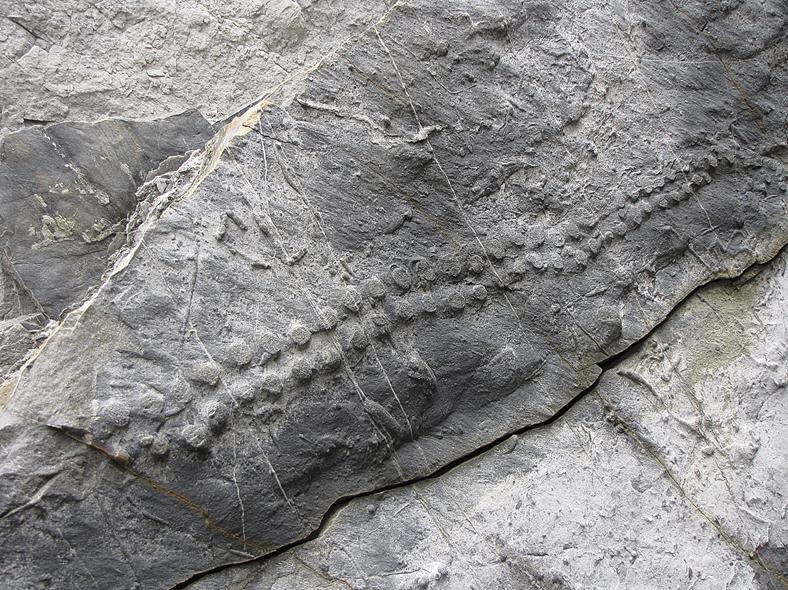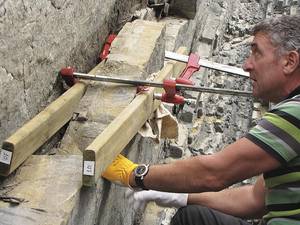The rescue of the fossil footprint of an unknown organism in Itzurun
2011/12/01 Elhuyar Zientzia Iturria: Elhuyar aldizkaria

Seven years ago, two geologists found a mysterious footprint in the ravine of the biotope Deba-Zumaia. The director of the biotope, Asier Hilario, and the Spanish Higher Council for Scientific Research (CSIC), Juan Carlos Gutiez-Marco, immediately realized the importance of the discovery.
In fact, Asier Hilario stressed that "the fossil has a great scientific interest, especially for its size. Fossils of this type that have been found to date have a length of between 30 and 40 centimeters, which means 1.53 meters. That makes it special, great."

However, the fossil was in danger of extinction, as it was at the base of the cliff, under the force of the waves and in an unstable place. Thus, it was recently decided to remove it and move it to the interpretation centre of Algorri (Zumaia). Since then it is available to all those who want to see and analyze it.
The fossil is a fossilized footprint (icnofósil) of an organism that lived in Eocene 49 million years ago. Scientists do not know this organism, but have found more clues of this type, corresponding to a period of 411 million years (from the ordovician period of Paleozoic to Neogen). However, there are not many specimens and it has been called in various ways. However, the scientific name of the fossil is Saerichnites abruptus.
Today, thanks to the batisfatos, it has been possible to photograph similar remains on the seabed. They have been called Saerichnites canadensis and the oldest are those of Cambodia, but in these cases they do not know which organism generates the footprint.
The specimen found in the biotope is in very good condition and is ideal to appreciate the characteristics of this type of fossils.



